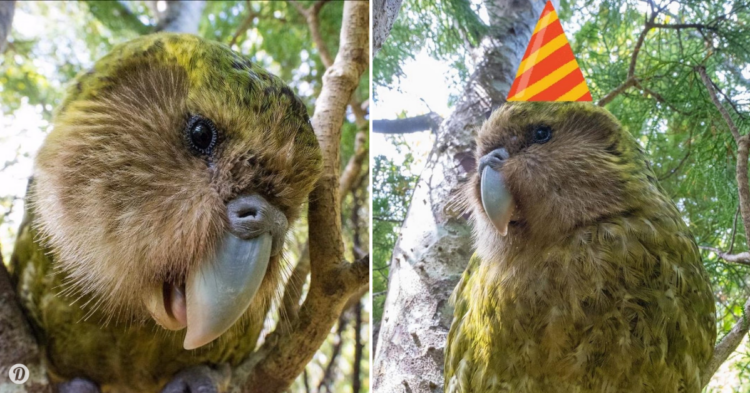Out of 350 discovered species of parrots, the kākāpō is the most endangered. Comparatively, it is also the fattest.
Though the kākāpō was once one of New Zealand’s most common birds, there are now only 147 living kākāpō adults.
There are so few that each adult has its own individual name.

Ruth, Hoki, Suzanne, and Zephyr are parrots with their own names and personalities.
Look at this colorful fellow right here. He’s cuddling .
Because of the kākāpō’s endangerment, people are now able to donate to a species recovery program.

The program allows you to ‘adopt’ a kākāpō, similar to how our grandmothers adopted polar bears for us every Christmas.
The money goes directly to organizations that work to preserve kākāpō habitat, and you even get a little stuffed kākāpō in the process!
I’m obsessed with the kākāpō.

Look at that adorable pudgy little face.
Look at those fabulous colors.
He’s a 12/10 on his worst day.
Their extinction rates are due to hunting and deforestation.

The Guardian reports that infertility and inbreeding have also caused long-term problems for the bird’s population.
However, as of 2019 their declining population has surprisingly seen a massive increase.
76 kākāpō chicks have hatched this year, with 60 expected to make it to adulthood.
This astounding news is in part because of heavy seeding in the New Zealand bush that has produced an abundance of the bird’s favorite food: fruit from the Rimu tree.
“In the last two seasons there have been huge quantities of fruit not seen for 50 years, so that’s why all of the female kākāpō know it is time to breed,” explains Dr Andrew Digby of the Department of Conservation’s kākāpō recovery program, “meaning some have now been able to nest twice.”
The chicks are being raised on two predator-free islands off the coast of New Zealand.

But eventually the team would like to reintroduce the population back to mainland cities and towns.
Dr Digby explains that they are waiting for a number closer to 500 before they let their study become more relaxed.
Currently, every kākāpō in New Zealand has a smart transmitter attached to its body.
They also have remote monitoring systems embedded in their nests.
“I can be anywhere in the world and log in and find out which kākāpo mated last night,” Digby explains, “who they mated with, how long they mated for, the quality of the mating – it’s real big brother stuff.”
The kākāpō isn’t just of interest to the scientific community.

There’s an entire Instagram community dedicated to photographs, paintings, and various artwork of the bird.
The kākāpō’s got a fan base, and it needs it now more than ever.
Let’s celebrate the kākāpō’s newfound success, and hope it doesn’t go celibate any time soon.

The loveliest, thiccest friend in the animal kingdom is making 2019 its year, proving to us all that a little motivation goes a long way.

















































